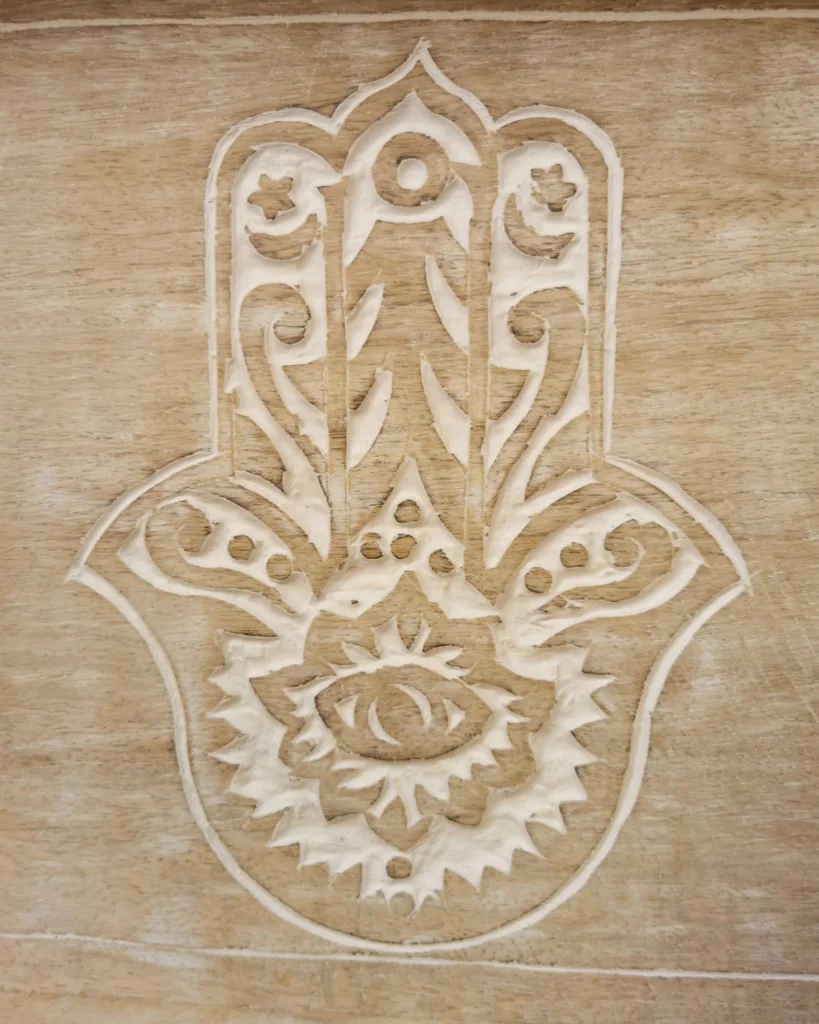The Hamsa hand, also known as the Hand of Fatima or Hand of Miriam, is a powerful symbol that has been used for centuries in various cultures and religions. This ancient symbol is believed to bring protection, good fortune, and blessings to those who wear or display it.

Origin and Cultural Significance
The origins of the Hamsa hand can be traced back to ancient Mesopotamia, where it was used as a protective amulet against the evil eye. Over time, the symbol spread across different cultures and religions, including Judaism, Islam, and Christianity.
In Judaism, the Hamsa hand represents the hand of God and is seen as a symbol of divine protection. It is often associated with the story of Miriam, the sister of Moses, who was believed to possess great spiritual power.
In Islam, the Hamsa hand is known as the Hand of Fatima, named after the daughter of the Prophet Muhammad. It is considered a symbol of protection, spirituality, and good luck.
Christianity also recognizes the Hamsa hand as a symbol of divine protection. It is often associated with the Virgin Mary, who is considered a powerful intercessor and protector.
Symbolism and Interpretations
The Hamsa hand is typically depicted as a symmetrical hand with an open palm and five fingers. The fingers can sometimes be stylized or decorated with various symbols, such as an eye, a fish, or a heart.
One of the most prominent features of the Hamsa hand is the eye, known as the “evil eye.” This eye is believed to ward off negative energy and protect against jealousy, envy, and ill-wishing. It is a symbol of watchfulness and awareness.
Each finger of the Hamsa hand also holds its own symbolic meaning. The thumb represents strength, the index finger represents authority, the middle finger represents balance, the ring finger represents love, and the little finger represents health.
When worn as jewelry or displayed in homes, the Hamsa hand is believed to bring blessings, happiness, and good fortune. It is said to provide protection against evil spirits, negative energies, and the evil eye.
Modern Interpretations and Popularity
Today, the Hamsa hand has gained popularity worldwide and is often used as a decorative element in jewelry, home decor, and clothing. It has become a fashionable symbol that transcends cultural and religious boundaries.
Many people are drawn to the Hamsa hand not only for its aesthetic appeal but also for its spiritual and protective qualities. It serves as a reminder of the importance of staying connected to one’s faith, spirituality, and inner strength.
In addition to its traditional symbolism, the Hamsa hand has also been adapted to represent various personal beliefs and values. Some people see it as a symbol of peace, unity, and universal love, while others interpret it as a symbol of personal empowerment and resilience.
Whether worn as a personal talisman or displayed as a decorative piece, the Hamsa hand continues to hold deep meaning and significance for people around the world. It serves as a reminder of the power of faith, protection, and positivity in our lives.
The Symbolic Meaning of Hamsa Hand Tattoos
The Hamsa hand tattoo is a popular choice among those seeking a meaningful and visually appealing design. This ancient symbol holds deep significance in various cultures and religions, making it a fascinating choice for body art.
Originating in the Middle East and North Africa, the Hamsa hand is believed to offer protection against the evil eye and bring good luck to its wearer. The symbol is often depicted as a hand with an eye in the center, representing the watchful and protective gaze of a higher power.
In Judaism, the Hamsa hand is known as the Hand of Miriam, symbolizing the sister of Moses and Aaron. It is associated with feminine energy and is believed to bring blessings, strength, and fertility. The Hamsa hand is also considered a powerful talisman against negative energies and is commonly used as a protective amulet.
In Islamic culture, the Hamsa hand is known as the Hand of Fatima, representing the daughter of the Prophet Muhammad. It is seen as a symbol of patience, faith, and protection. The Hamsa hand is often used as a decorative element in jewelry, home decor, and tattoos to ward off evil and bring good fortune.
Beyond its religious and cultural significance, the Hamsa hand tattoo can also hold personal meaning for individuals. It can symbolize their connection to a specific culture or faith, their desire for protection and positivity, or their belief in the power of ancient symbols. When getting a Hamsa hand tattoo, it is important to consider its placement and design.
Some people choose to incorporate other elements such as flowers, birds, or spiritual symbols to enhance the meaning and aesthetics of the tattoo.
In conclusion, the Hamsa hand tattoo carries a rich and diverse symbolic meaning. Whether chosen for its cultural, religious, or personal significance, this ancient symbol serves as a reminder of protection, luck, and spirituality for those who wear it proudly.
Final Thoughts
The Hamsa hand is a symbol that carries rich cultural and spiritual significance. It represents protection, good fortune, and blessings across different cultures and religions. Whether used as a personal talisman or displayed as a decorative piece, the Hamsa hand serves as a powerful reminder of the importance of faith, spirituality, and positive energy in our lives.





